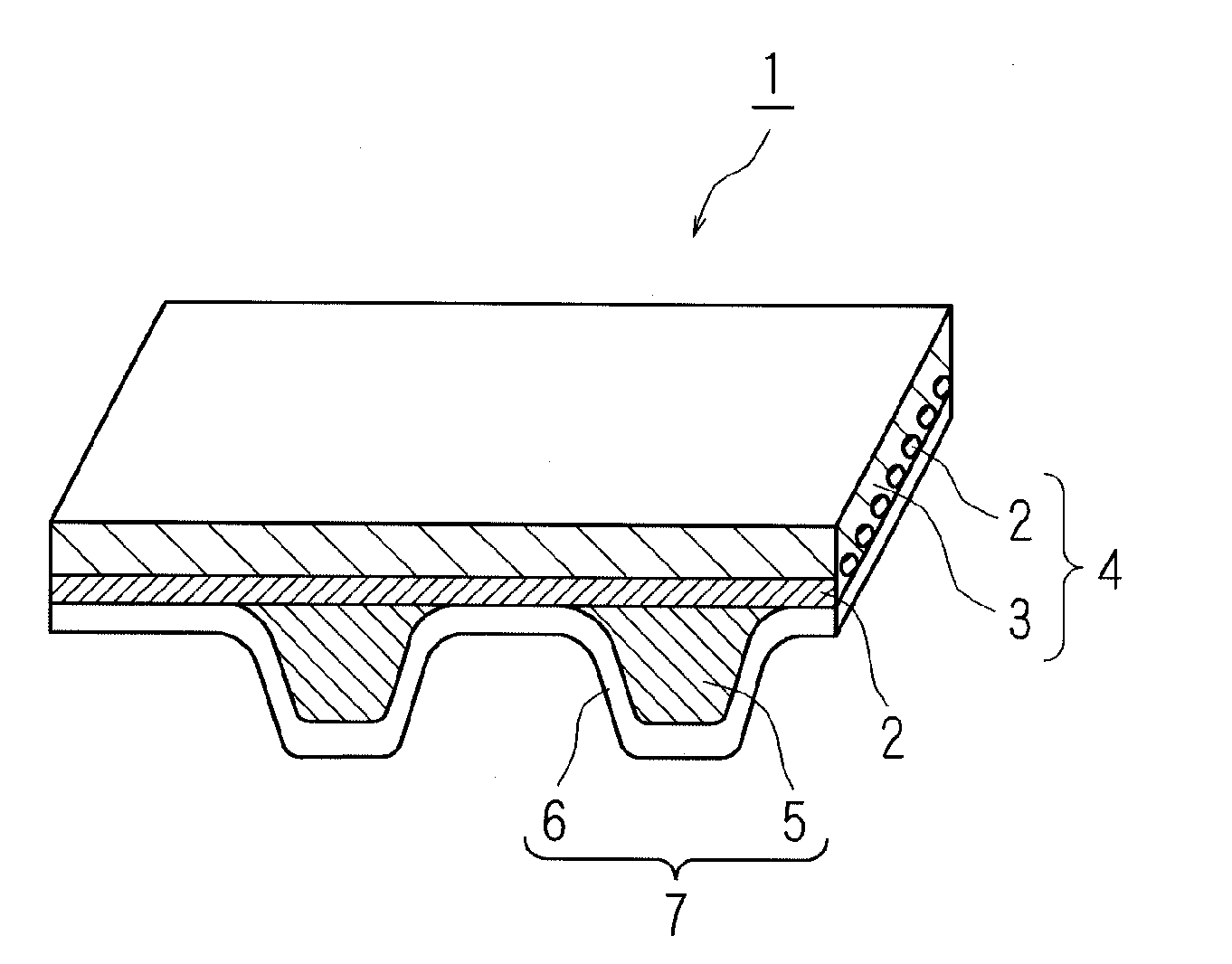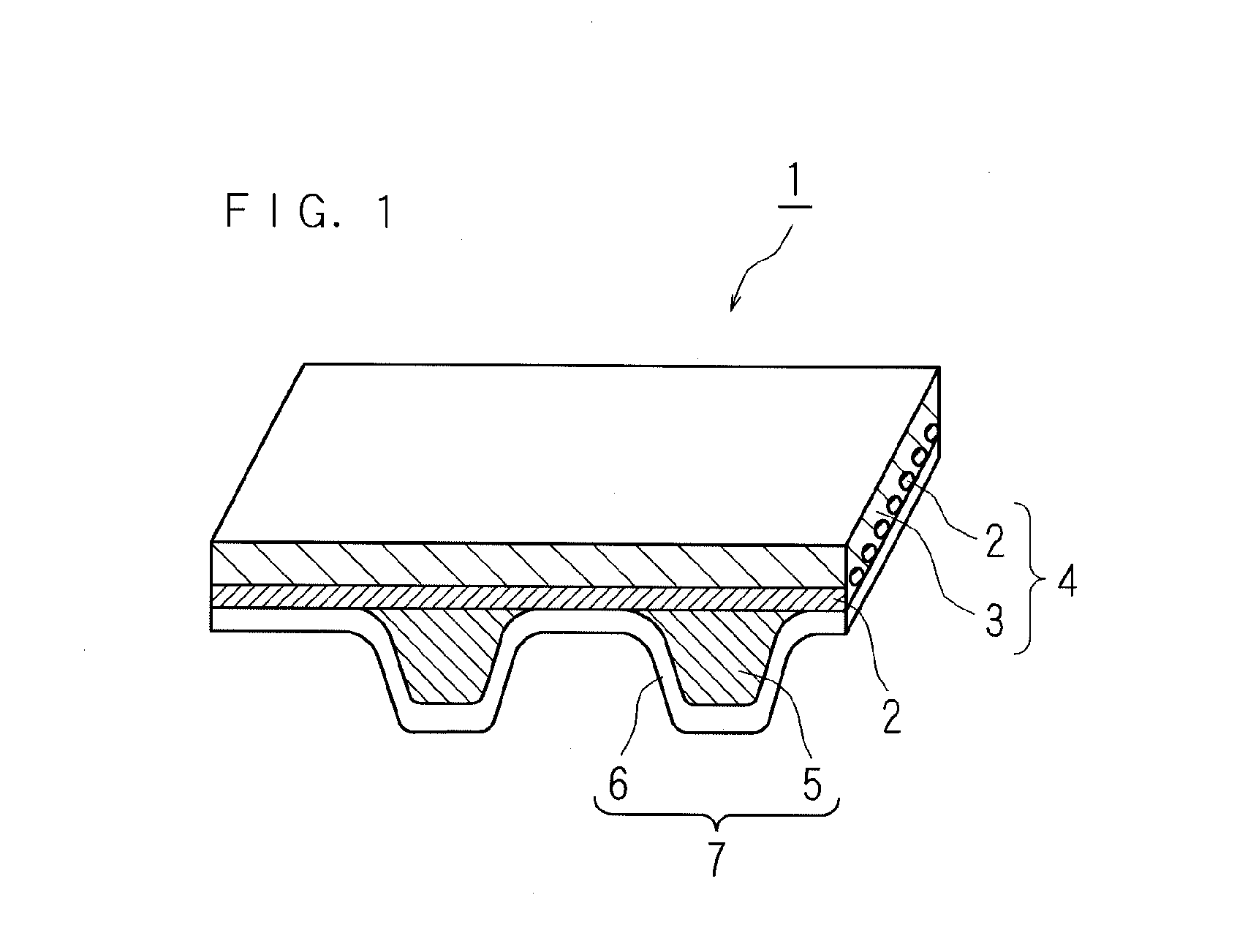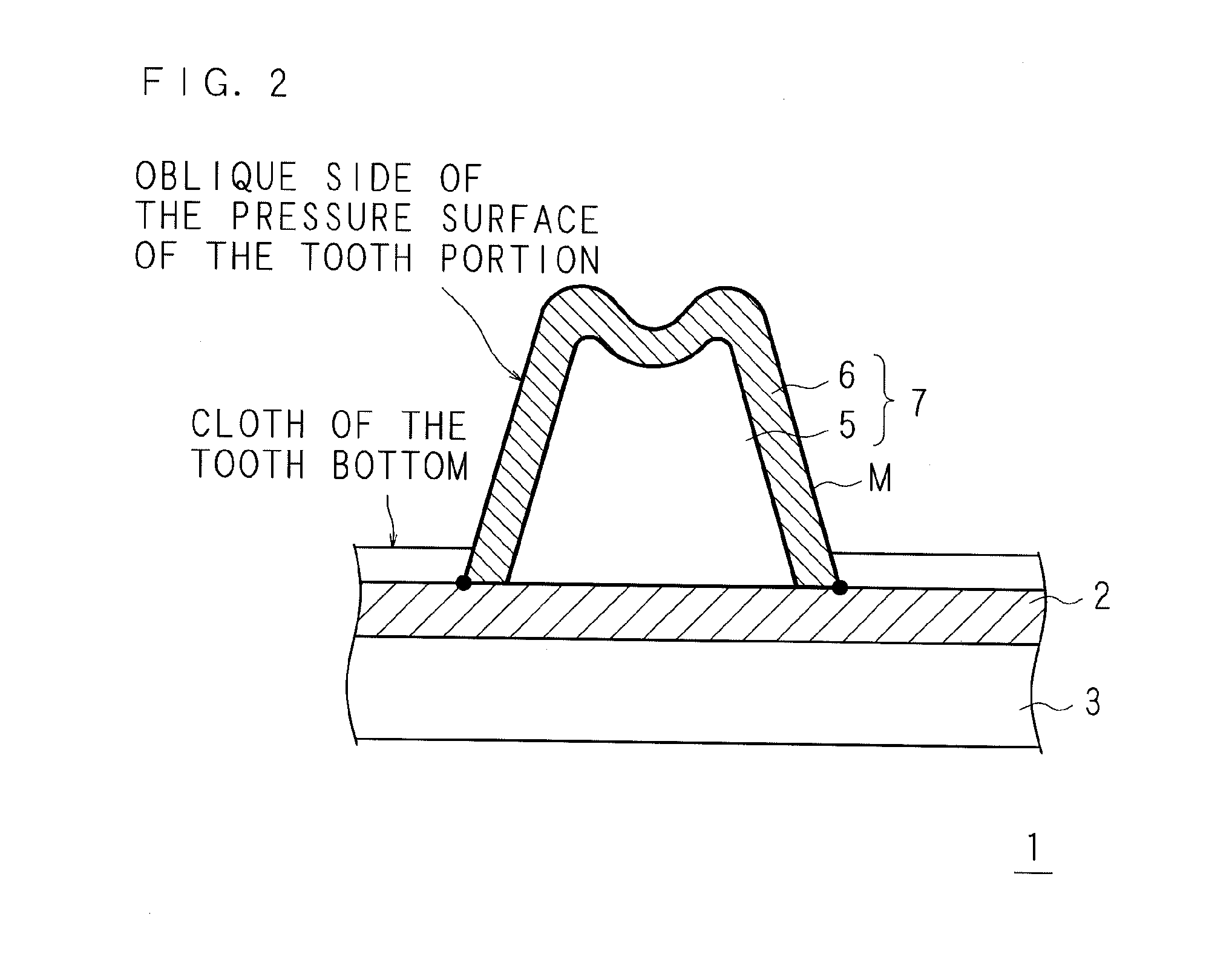Toothed belt
- Summary
- Abstract
- Description
- Claims
- Application Information
AI Technical Summary
Benefits of technology
Problems solved by technology
Method used
Image
Examples
composition example 1
[0198]A rubber portion composition of composition example 1 was obtained by mixing the following according to the composition (shown in mass part and mass %) of Table 10 shown below: HNBR (“Zetpol [trademark] 4310” manufactured by Zeon Corporation); an HNBR polymer alloy (“Zeoforte ZSC4195CX” manufactured by Zeon Corporation); TMLA ester (trimellitic acid triisononyl, “Adekacizer C9N” manufactured by Adeka Corporation); DOS (manufactured by Daihachi Chemical Industry Co., Ltd.); 4,4′-bis(α-α-dimethylbenzyl)diphenylamine (“Nocrac CD” manufactured by Ouchi Shinko Chemical Industrial Co., Ltd., antioxidant); silica (“Nipsil ss10” manufactured by Tosoh Silica Corporation); wax (“Suntight” manufactured by Seiko Chemical Co., Ltd.), sulfur (“Sulfax PMC” manufactured by Tsurumi Chemical Industry Co., Ltd., cross-linking agent); N-cyclohexyl-2-benzothiazolyl sulfenamide (“NOCCELER CZ-G” manufactured by Ouchi Shinko Chemical Industrial Co., Ltd, vulcanization accelerator); high molecular wei...
composition examples 2 to 7
[0200]Rubber portion compositions of composition examples 2 to 7 were obtained according to the above-mentioned composition of Table 10.
composition examples 8 to 11
[0201]Rubber portion compositions of composition examples 8 to 11 were obtained according to the above-mentioned composition of Table 11.
TABLE 11COMPOSITION EXAMPLE891011MASSMASSMASSMASSPART%PART%PART%PART%HNBR2516.82516.12517.22515.8HNBR POLYMER6040.46038.66041.26037.9ALLOYTMLA ESTER4.43.09.56.12.181.511.857.5DOS1.471.03.182.00.730.53.952.54,4′-BIS(α-α-10.710.610.710.6DIMETHYLBENZYL) DIPHENYLAMINESILICA53.453.253.453.2WAX10.710.610.710.6SULFUR0.20.10.20.10.20.10.20.1N-CYCLOHEXYL-2-10.710.610.710.6BENZOTHIAZOLYLSULFENAMIDEHIGH MOLECULAR2013.52012.92013.72012.6WEIGHT HNBRDI[(t-BUTYLPEROXY) ISOPROPYL]BENZENE)8.55.78.55.58.55.88.55.4N—N′-m-10.710.610.710.6PHENYLENEDI MALEIMIDEFEF CARBON2013.52012.92013.72012.6TOTAL148.57100155.38100145.6100158.5100
(2) Evaluation of Heat Resistance
[0202]From the rubber portion compositions of composition examples 1 to 11, rubber sheets were formed by hydraulic pressing (for 30 minutes at 160 deg C.).
[0203]The rubber sheets were placed in a gear oven and...
PUM
| Property | Measurement | Unit |
|---|---|---|
| Percent by mass | aaaaa | aaaaa |
| Percent by mass | aaaaa | aaaaa |
| Percent by mass | aaaaa | aaaaa |
Abstract
Description
Claims
Application Information
 Login to View More
Login to View More - R&D
- Intellectual Property
- Life Sciences
- Materials
- Tech Scout
- Unparalleled Data Quality
- Higher Quality Content
- 60% Fewer Hallucinations
Browse by: Latest US Patents, China's latest patents, Technical Efficacy Thesaurus, Application Domain, Technology Topic, Popular Technical Reports.
© 2025 PatSnap. All rights reserved.Legal|Privacy policy|Modern Slavery Act Transparency Statement|Sitemap|About US| Contact US: help@patsnap.com



